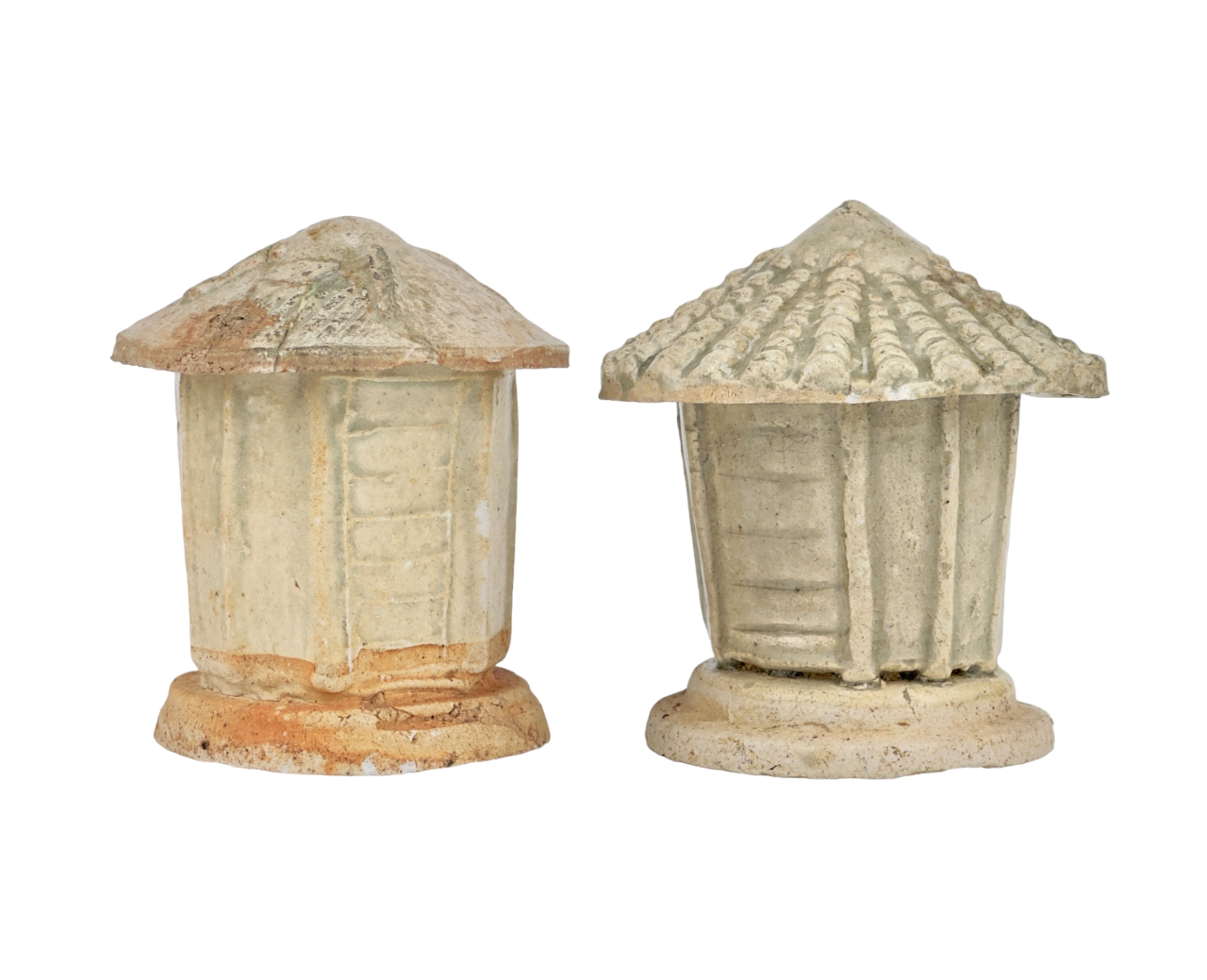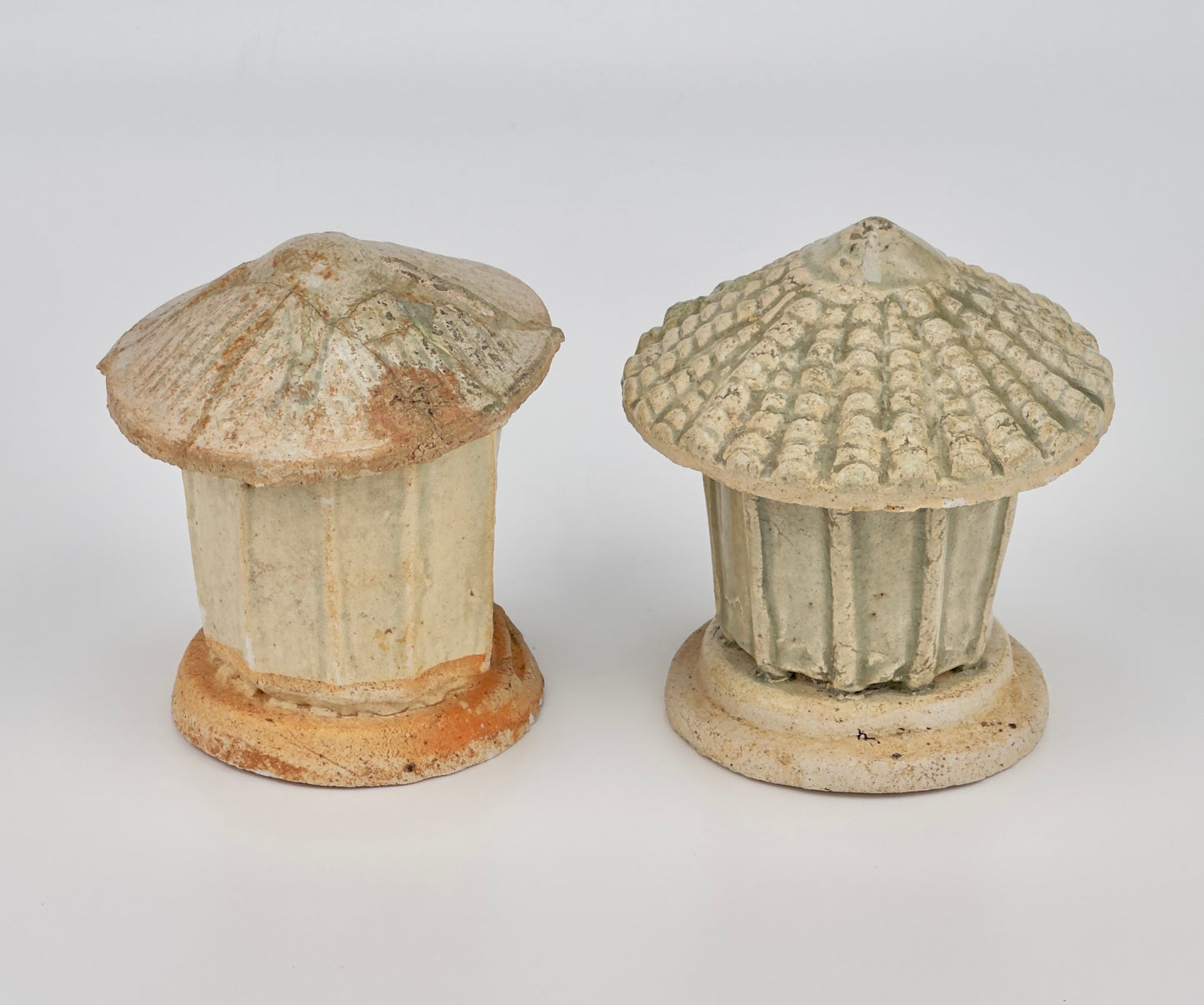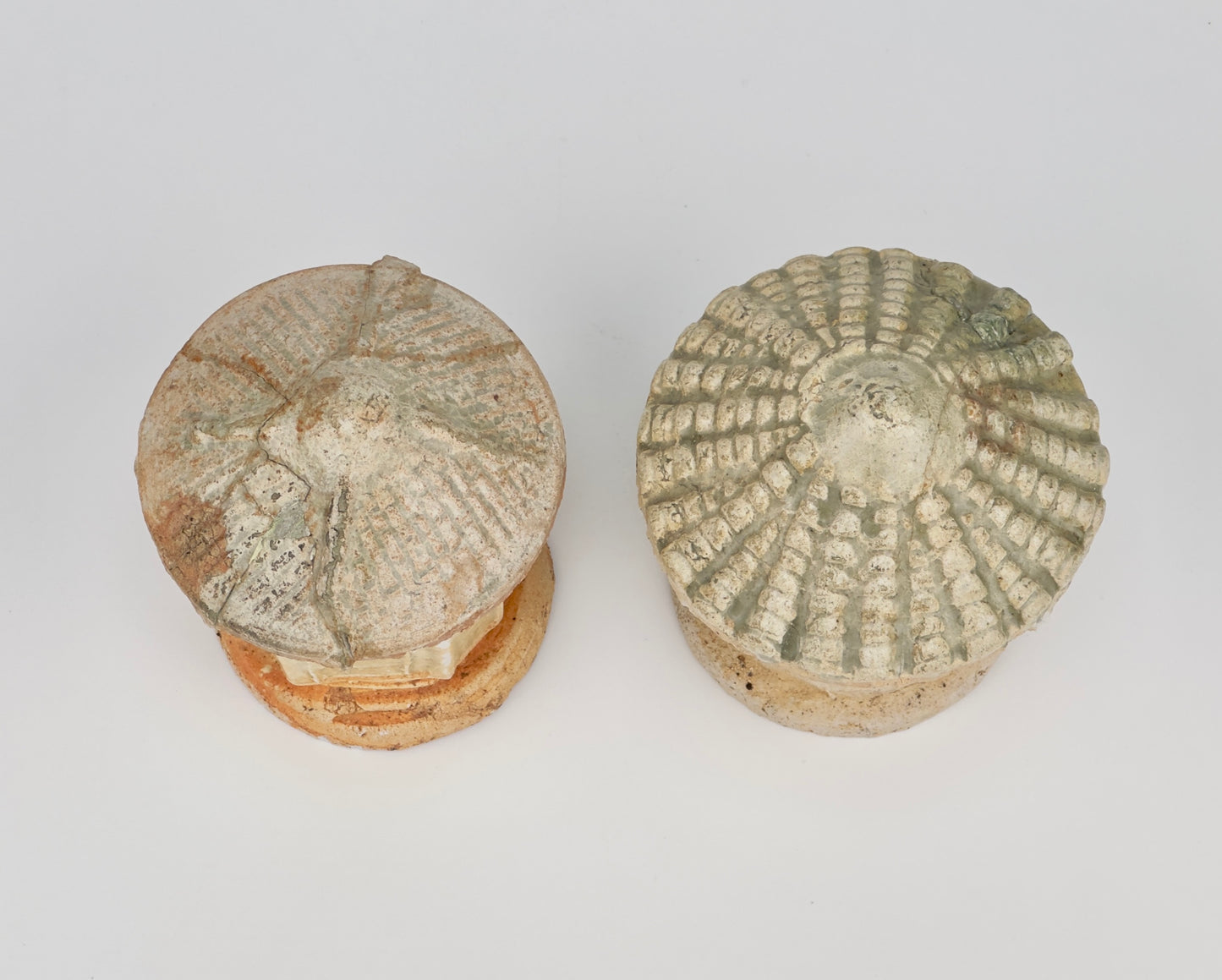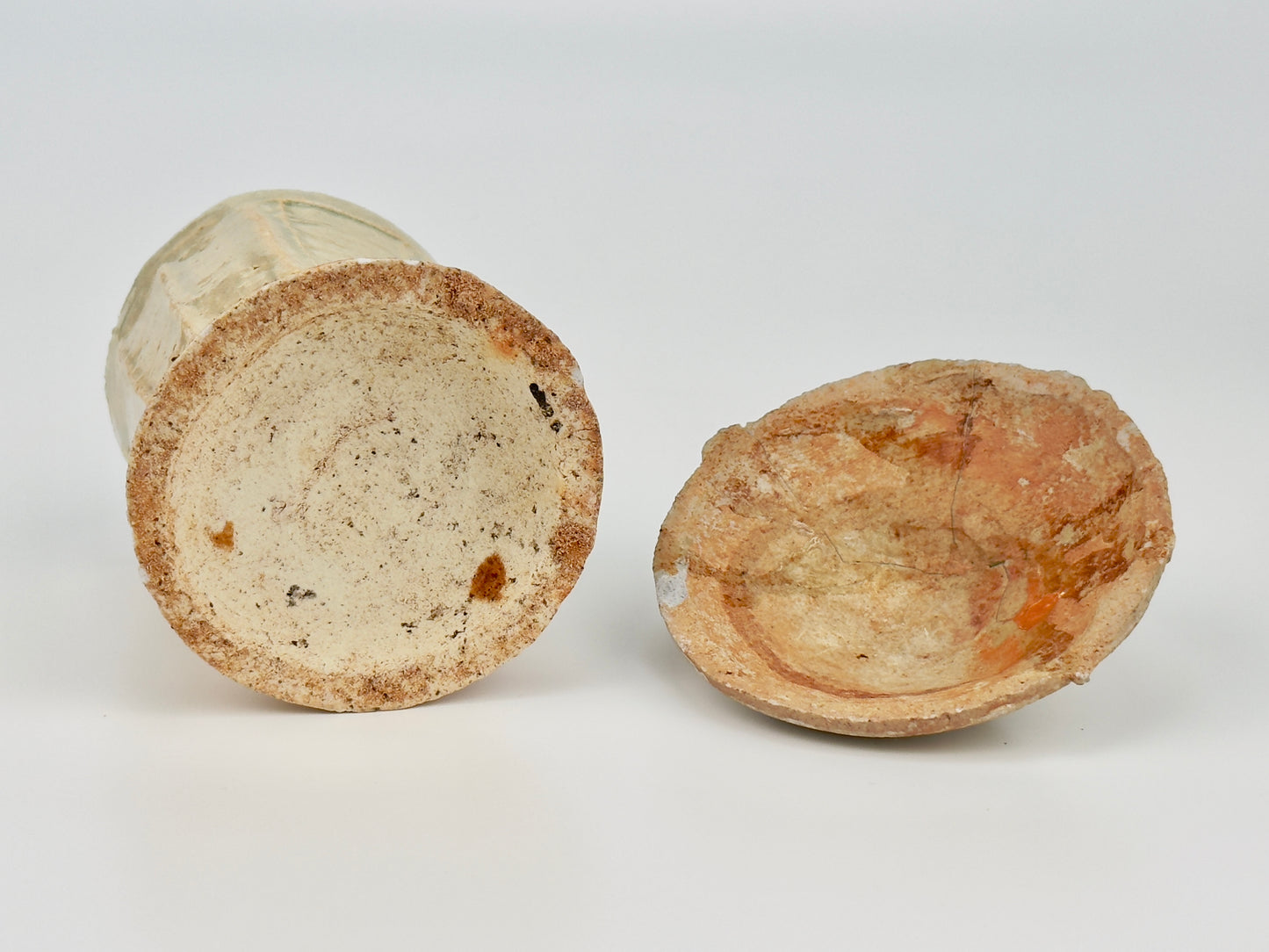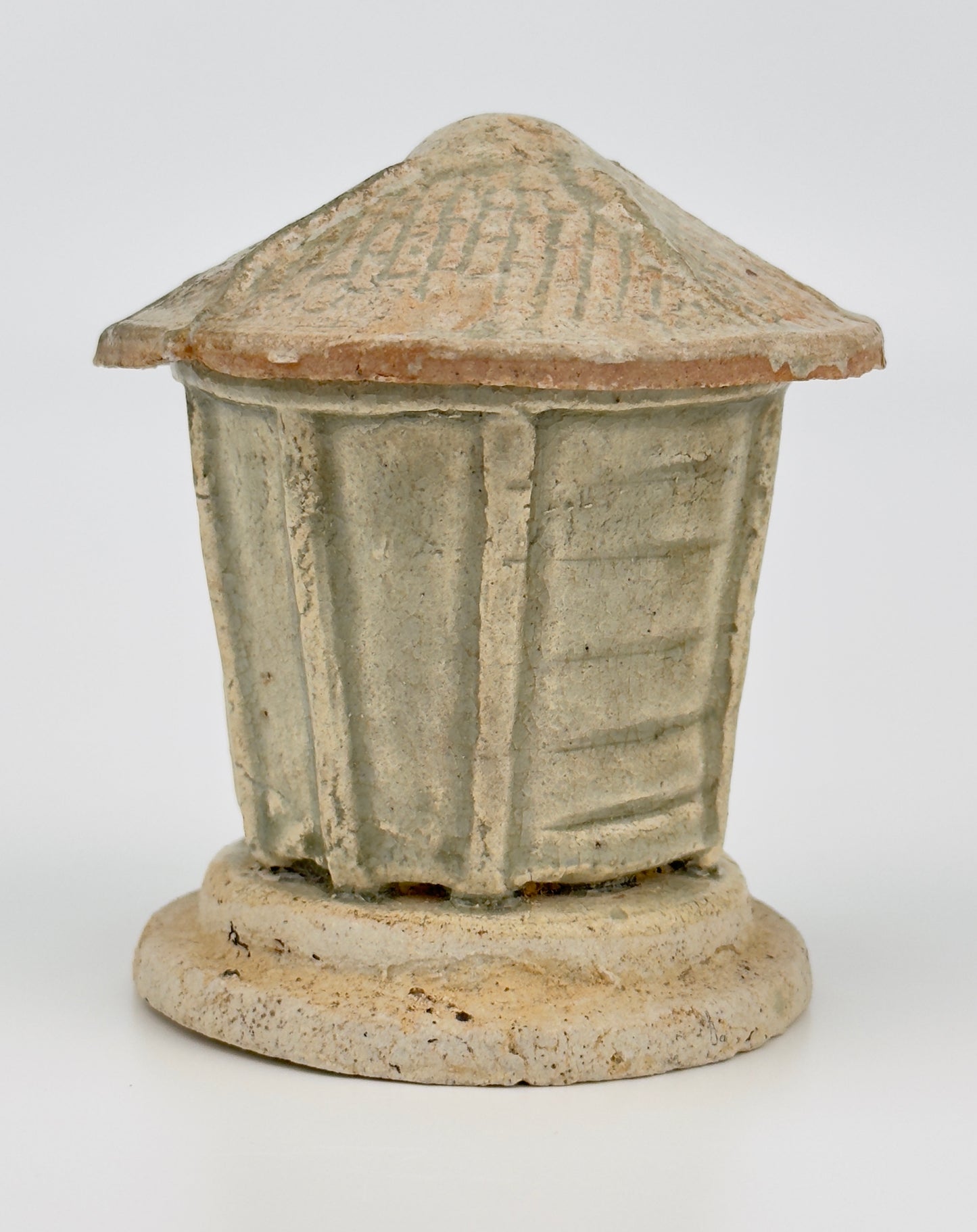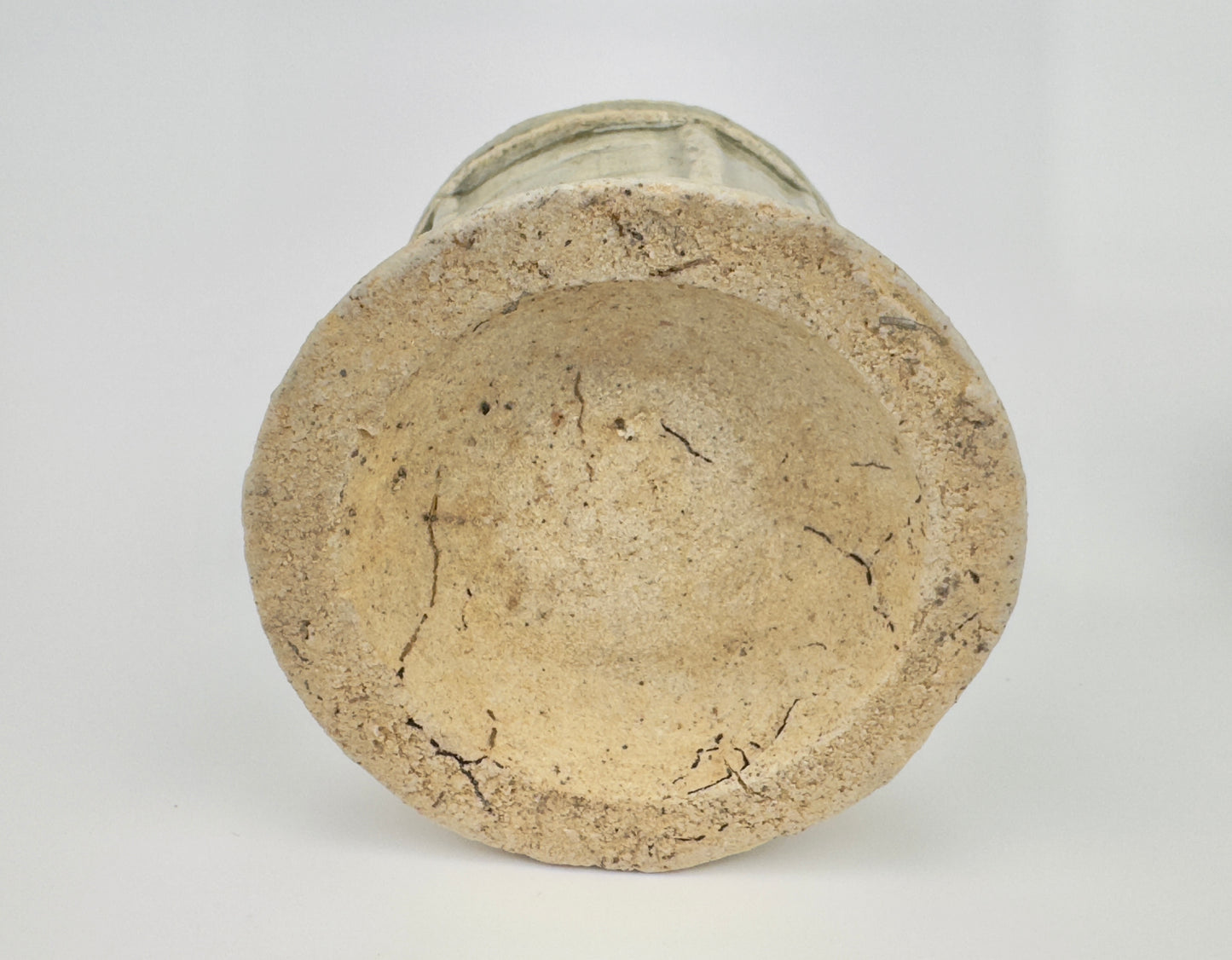AUA Oriental Art
Chinese Qingbai Small Model of a Granary Set, Song Dynasty
Chinese Qingbai Small Model of a Granary Set, Song Dynasty
Couldn't load pickup availability
Two granary model porcelains. East Asia, This pottery representation of a granary sits on a layered base, topped with a conical lid that also acts as its roof, all finished in a greyish-blue glaze characteristic of Qingbai ware. The round structure features vertical, embossed strips intersected by a sliding door marked with horizontal lines on one side. Above, a tiled roof completes the model, topped with a central finial that doubles as the lid's handle. The interior of the lid, along with the edge and bottom of the piece, retains the unglazed finish known as biscuit.
Period : Song Dynasty(960-1279)
Type : Porcelain Model
Medium : Qingbai
Dimension : 11 cm(Height), 9cm(Lid Diameter)
Condition : Good
Provenance : Acquired in late 1990s from Hongkong
Reference :
1) Artemis Gallery - Louisville, CO, US - September 29, 2022
https://www.invaluable.com/auction-lot/rare-chinese-song-dynasty-pottery-lidded-granary--82-c-5484267abe
2) University of Oxford - Ashmolean Museum - Accession no.EA1956.3076
http://jameelcentre.ashmolean.org/collection/921/object/11619
* Qingbai Ware
Qingbai ware, which translates to "blue-white ware," is a type of Chinese porcelain that was made at the Jingdezhen and other kilns in the porcelain-producing regions of China, primarily during the Song dynasty (960–1279) and continuing into the Yuan dynasty (1271–1368). It is known for its translucent quality and the pale blue-green glaze that characterizes most of its pieces.
The qingbai glaze was achieved using a small amount of iron in a reduction-fired atmosphere, which produced the subtle blue-green tint. The body of qingbai ware is typically made of a fine, white porcelain that is often referred to as 'artificial jade' due to its resemblance to the esteemed stone. The thinness of the body and the high firing temperatures used contributed to the translucent quality of the finished product.
Qingbai ware includes a range of items such as bowls, cups, vases, and ewers. The designs are usually simple and elegant, with an emphasis on the graceful lines and form of the objects. Decorative motifs, when present, are often incised, carved, or molded in relief and can include floral patterns, dragons, phoenixes, and other symbolic elements drawn from Chinese culture.
Over time, the technology and techniques used to produce qingbai ware evolved, leading to innovations in glaze and decoration that would influence later types of Chinese porcelain. Despite these changes, qingbai ware remains a distinguished example of the potters' art in Song and Yuan China, reflecting the refined aesthetic and cultural values of the period.
Share
